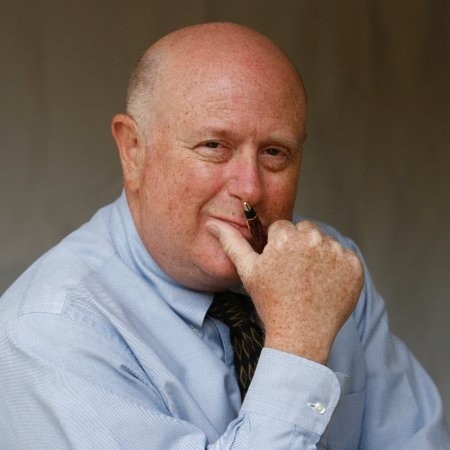
I like bicycling. I hate steep hills. That describes why most of us don’t ride bikes. Too often it feels more like work than fun. We definitely don’t ride them to work. Who wants to show up all hot and sweaty? That perspective was radically changed during my first e-bike ride.
The experience on that e-bike was pure fun – just as other TriplePundit writers have experienced over the years. The ride was on east San Diego’s hilly dirt trails. I had ridden these trails before on my mountain bike. That experienced ended with a sense of winning an athletic battle. I finished sweaty, tired and proud.
My e-bike ride left me laughing in wonder over how much clean technology can enhance the human experience. I soared up rock strewn hills like an Olympian. At the end of my 30-minute ride I was neither sweaty nor tired. I felt exhilarated. I could have walked into a business meeting with energy and without sweaty embarrassment.
The basics about e-bikes
There are two basic types of e-bikes. Class 1 and 3 e-bikes have electric motors that assist in pedaling. They typically have a 20 miles per hour top speed- about how fast I go when riding my traditional mountain bike down a city street hill.
Class 2 e-bikes are more like motorized vehicles. They have throttles. The riding experience is more like being on a scooter than a bicycle.
My test ride was on a class 1 e-bike. It had pedals and mechanical gears like my mountain bike. It also had a battery/electric drive system that assists in pedaling. A rider has the option of pushing a handlebar button to select pedaling assistance levels or the rider can put the electric system into automatic and let the bike manage pedal assistance. I liked the added fun of selecting assistance levels, but the automatic system worked great and allows the rider to just relax and pedal.
An e-bike cultural revolution is underway
E-bikes are driving a bicycling cultural revolution. Bicycling purists (like I was before riding an e-bike) look at e-bikes as cheating.
E-bike enthusiasts view them as a technology innovation that could dramatically increase the number of people exercising with zero emissions.
Our local and national governments are attempting to bridge this cultural divide. Today, most cities are allowing non-throttle e-bikes to use bike lanes. They are all over San Diego’s coastal bike lanes, mostly ridden by tourists grinning from ear to ear over the fun and ocean views.
Riding e-bikes in our national parks and forest lands is still a work in progress. Up until recently they were classified as motorized vehicles and were limited to roads/trails that permitted motorized vehicles. The Trump Administration recently eased these rules to allow e-bikes limited to 20 miles per hour on any U.S. national park trails.
But the process of where e-bikes can be ridden is still an evolving governmental question that requires riders to check the rules for their city or parkland.
Barriers to e-bike commuting
E-bikes could be a huge zero-emissions urban transportation solution if it were not for the lack of protected bike lanes.
I am proud that my hometown of Oceanside has begun the process of converting the four lane Coastal Highway into two lanes with two protected bike lanes. Reaching this decision required often contentious public input. Merchants were fearful of losing sales. Commuters feared traffic gridlock.
The ultimate decision to create protected bike lanes was driven by issues of safety and economic growth. The community galvanized around bike lane safety after a child riding a bike was hit by a car and killed. The community recognized that this tragedy was preventable and would happen again if bicyclists were not protected.
The quest for sustainable economic growth was the other decision driver. There is now a solid body of case studies documenting the economic growth gained by communities with biking and walking access. The economic bottom line is that protected bike lanes and high walkability attracts urban citizens and retail visitors. This leads to increased retail sales, tax revenues and property values.
Unfortunately, creating protected bike lanes is still more an urban experiment than urban design. For example, while Oceanside is building protected bike lanes on the Pacific Coast Highway (PCH), it has no citywide plan for protected bicycling. Riding my e-bike the four miles west to the PCH requires taking my life into my own hands by riding through highly congested intersections without protected bicycling lanes. This means the only safe way for me to ride my e-bike on the PCH is to load it into my SUV (electric hybrid!) and drive there for a ride.
Sustainable mobility is within our grasp
Like electric vehicles, e-bikes have opened the technology door to a sustainable future delivering economic growth along with enhanced human and environmental health. Economics is no longer a barrier. While clean technology can have a higher acquisition cost, it can win on long-term cost competitiveness.
The issue is us. Sustainability is within our grasp. We just have to buy it and vote for it.
Image credit: Pedego Electric Bikes/Facebook

Bill Roth is a cleantech business pioneer having led teams that developed the first hydrogen fueled Prius and a utility scale, non-thermal solar power plant. Using his CEO and senior officer experiences, Roth has coached hundreds of CEOs and business owners on how to develop and implement projects that win customers and cut costs while reducing environmental impacts. As a professional economist, Roth has written numerous books including his best selling The Secret Green Sauce (available on Amazon) that profiles proven sustainable best practices in pricing, marketing and operations. His most recent book, The Boomer Generation Diet (available on Amazon) profiles his humorous personal story on how he used sustainable best practices to lose 40 pounds and still enjoy Happy Hour!














